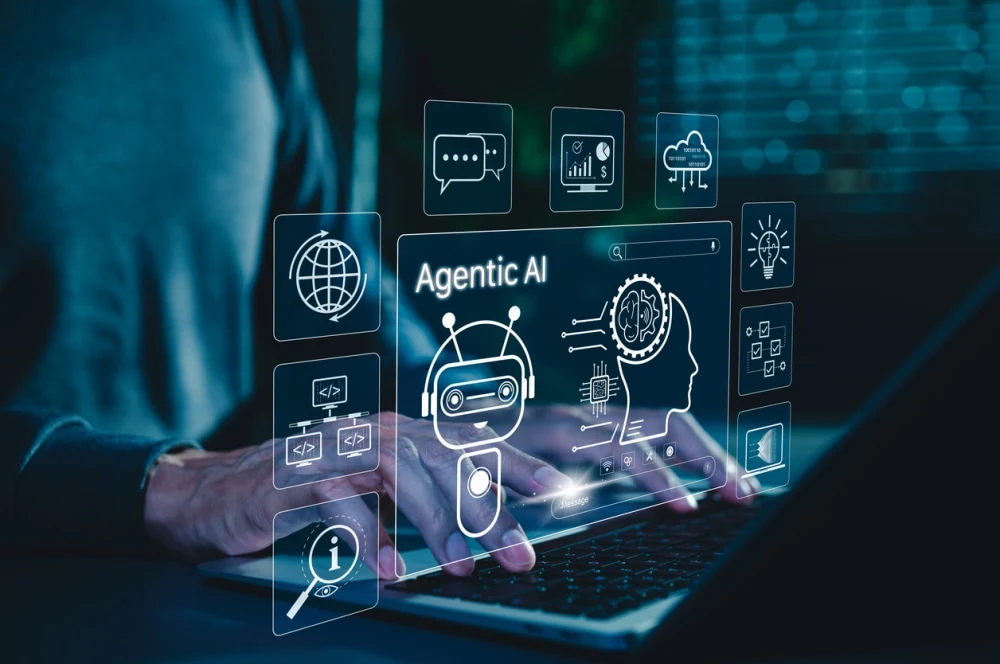Agentic AI has shifted from concept to practice across manufacturing, logistics and energy, with early adopters reporting measurable efficiency and revenue gains. Unlike earlier automation, agents can perceive context, reason through multistep tasks and act across digital systems, enabling organisations to redesign core workflows rather than incrementally optimise them. Recent advances in large language models, enterprise integration via APIs and expanded GPU capacity are accelerating deployment, prompting leaders to align strategy, operating models and governance to capture value. The direction is clear: from pilots that speed up single tasks to domain-level reinvention that links outcomes directly to the bottom line.
From Opportunity to Outcomes
Early field results show material performance improvements. Manufacturers report higher defect detection through automated visual anomaly checks. Logistics operators see efficiency gains from autonomous routing and scheduling, with some programmes cutting inventory and logistics costs by more than 20 %. Transactional cycle times in documentation have dropped from days to hours or minutes through intelligent workflow agents. These outcomes signal that agentic systems are starting to bridge the gap between experimentation and meaningful business impact.
The value at stake is significant. By 2030, agentic AI could generate €418.5 billion to €604.5 billion in additional annual revenue, equating to a 5-10 % uplift in advanced industries such as automotive. At the same time, cost reductions of 30-50 % are in scope as repetitive tasks are automated and operations streamlined. These projections sit alongside three capability pillars observed in practice: automation that removes manual effort and adapts dynamically to change, continuous quality and safety monitoring that detects anomalies earlier than periodic checks, and accelerated innovation that compresses research tasks from weeks to hours.
Must Read: Agentic AI and the Future of Cybersecurity
Technology enablers are converging. More capable language models provide improved reasoning, APIs connect agents to complex enterprise systems and accessible GPU infrastructure supports computationally intensive workloads. Together these unlock agents that can pursue goals, make decisions and execute tasks with limited human intervention. However, realising impact depends on strategic intent, cross-functional integration and redesign of workflows, talent and governance, not technology alone.
What Early Deployments Look Like
In automotive R&D, a tier-one supplier re-engineered the creation of test case descriptions for hardware-near requirements. The company mapped the manual workflow into discrete agent-friendly steps and implemented a bespoke multi-agent solution using a frontier language model with an open-source agentic framework to mine historical requirements and descriptions. The system now drafts initial test cases that engineers refine, with some requirement types taking 50% less time, particularly benefiting less experienced staff. The team chose a custom build to achieve tighter integration and higher efficiency than off-the-shelf options that required heavy adaptation. Where novelty exceeded historical analogues, the organisation added more human oversight to maintain quality.
Commercial functions are also scaling activity. A truck OEM created a multi-agent system that mirrors prospecting tasks, from identifying firms actively in the market to assembling company-specific profiles and contact details. Agents synthesise diverse sources, including licensing applications, websites, news and imagery, while verifier agents check accuracy and actionability. Co-design with sales representatives ensured the tooling matched daily workflows, and adoption was managed with clear accountability. Within three to six months, prospective volume doubled and order intake rose by 40 %, demonstrating that agentic systems can lift throughput and revenue, not just cut cost.
These deployments share common design choices. Tasks are decomposed into orchestrated agent roles, with critics to validate outputs. Human-on-the-loop control provides supervision and intervention where needed. Change management is treated as integral, not ancillary, to ensure utilisation and translate agent outputs into business outcomes. Lessons learned emphasise that agents excel where patterns exist in data but require stronger oversight when facing genuinely novel scenarios.
Scaling Beyond Lighthouse Use Cases
Moving from isolated wins to enterprise-level impact requires redesign across process, people and data. On process, organisations shift from a use-case mindset to end-to-end workflow reinvention. Expert knowledge, decision logic and human–system interfaces are codified so agents can operate against clear objectives. Benefits are quantified and linked directly to financial outcomes to ensure that transformation remains economically grounded and sustainable.
On structure and talent, leaders define agent archetypes such as orchestrators and specialists, equip digital workspaces with the tools agents need and set accountability and governance so that agent-to-agent and human-agent collaboration works in practice. Clear responsibility boundaries and interaction models support trust and oversight as agents take on more autonomous tasks.
On technology and data, a scalable agentic AI mesh provides the orchestration layer for mixed ecosystems of proprietary and commercial agents. Four design principles underpin resilience and extensibility: composability to add tools and models without core changes, distributed intelligence so agents coordinate and divide work, layered decoupling of logic, memory, orchestration and interface and vendor neutrality to avoid lock-in. Data strategy pivots from narrow pipelines to reusable data products, with gaps in unstructured data addressed so agents can operate effectively. Risk management is built in from the start, including controls for hallucinations, decision boundaries and cybersecurity, alongside human-on-the-loop governance and alignment with evolving regulations such as the EU AI Act and sector standards.
Agentic AI marks an inflection point for advanced industries, offering a route to redesign operations, reshape cost structures and grow revenue by pairing autonomous execution with robust governance. Early adopters already report faster workflows, higher quality and stronger commercial performance, while the operating model shifts toward an always-on digital workforce that collaborates across systems and domains. The organisations that convert pilots into platforms and use cases into domain reinvention are best placed to move from automation to autonomy and secure durable advantages in efficiency, resilience and innovation.
Source: McKinsey & Company
Image Credit: iStock










